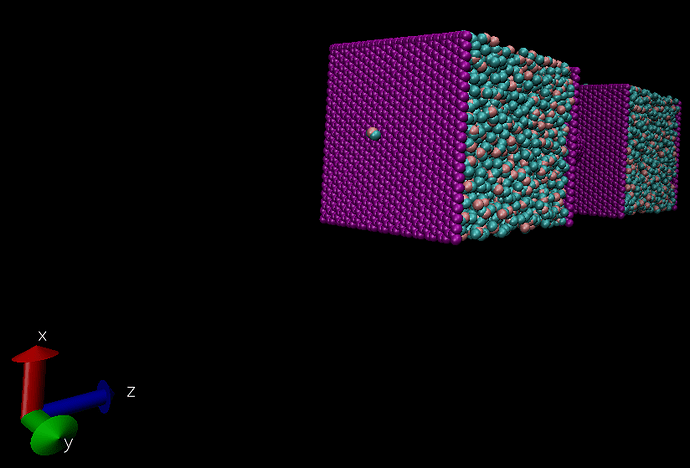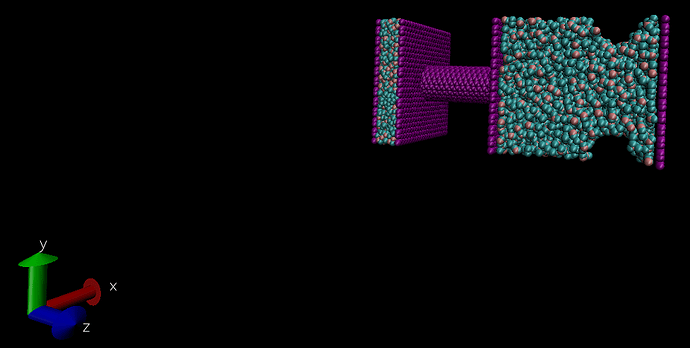Hi everybody,
I have two water boxes and a graphene sheet acting as a piston here. But, I visualized that a few water molecules pass through a graphene sheet when force exerts (photo attached) and this leads to the “cannot compute PPPM”. error finally. Hereby, I did several examination to improve this problem but unfortunately none of them were helpful. For example:
- I changed the fix shake command and applied it only on water molecules. But, it’s not working.
- I changed the pair_style from
lj/cut/tip4p/long to lj/charmm/coul/long. So, when I use the CHARMM parameters, this leakage is improved. But, I get holes at top and bottom by using CHARMM pair_style (water molecules are not uniformly distributed).
config2.in (2.9 KB)
config.data (2.7 MB)
config2.in (2.9 KB)
Thanks for your comments on this problem in advance,
The discussion that you are aiming to have, is not really a discussion about LAMMPS but about your research, and thus it is a discussion that you would need to have with your adviser rather than do it here.
Just a few comments on the different aspects to get you started thinking about your issues:
- different water models (like TIP4P vs TIP3P vs SPC/E etc.) represent the properties of water differently well (density, viscosity, boiling point, melting point, diffusivity, dipole moment and more), so you cannot just replace one with the other and expect a perfect match
- you always need to keep in mind the length and time scales of your simulation. what may seem slow is still extremely fast (after all you are simulating trajectories of small fractions of a second) and to achieve visible changes on these time scales, you may need to apply extreme conditions that are very different from experimental setups. most experimental conditions would be stationary at the simulation time scales.
- you have to consider carefully how you represent the graphene-water interactions. in most cases the graphene will only “see” water as something akin to soft “gelatin ball” similar to the “bubbles” in a bubble tea while itself will appear like a perforated plate; this is how a Lennard-Jones potential is like. considering the forces you apply and velocities you are dealing with (and the fact that you are keeping atoms unphysically stationary), having individual atoms pass through sheets comprising only a layer that is only of the thickness of a single atom is not really unexpected. again, you need to be extremely careful not to interpret atomic scale experiments like macroscopic experiments. a graphene sheet is not the same as a sheet of stainless steel, for example.

